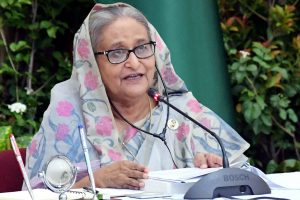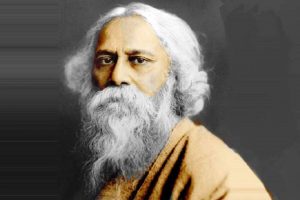Culture Desk
Satyajit Ray (1921-1992) is amongst the dozen or so master filmmakers of global cinema. His humanistic approach to films is considered unmatched to this day. He made his films mostly in Bengali, yet they are of universal interest — highlighting relationships, emotions, conflicts, joys and sorrows.
Today marks the 24th death anniversary of Satajit Ray.
Ray considered scriptwriting to be an integral part of direction. This is one reason why he initially refused to make films in any language other than Bengali. For his two non-Bengali feature films, he wrote the scripts in English, which translators then interpreted in Hindi/Urdu under Ray’s supervision.
His films demonstrate a remarkable humanism, detailed observation and subtle handling of characters and situations. The cinema of Satyajit Ray is a rare blend of intellect and emotions. He was controlled, precise, meticulous, and yet, evoked deep emotional response from the audience. His films depict a fine sensitivity without using melodrama or dramatic excess. He evolved a cinematic style that is almost invisible. He strongly believed “the best technique is the one that’s not noticeable.”
Though initially inspired by the neo-realist tradition, his cinema belongs not to a specific category or style but a timeless meta-genre that includes the works of other master filmmakers such as Akira Kurosawa, Alfred Hitchcock, David Lean, Federico Fellini, Ingmar Bergman, Jean Renoir and Yasujiro Ozu.
Ray’s films are cinematic and literary at the same time; using a simple narrative, usually in a classical format, but greatly detailed and operating at many levels of interpretation.
His first film, “Pather Panchali” (1955) established his reputation as a major film director — winning numerous awards including Best Human Document at the Cannes (1956). It is the first film of the Apu trilogy.
His later films include “Jalsaghar” (1958), “Devi” (1960), “Tin Kanya” (1961), “Charulata” (1964), “Nayak” (1966), “Asani Sanket” (1973), “Shatranj Ke Khiladi” (1977), “Ghare Baire” (1984), “Ganashatru” (1989) and “Shakha Prashakha” (1991). “Agantuk” (1991) was his last film.
Ray directly controlled many aspects of filmmaking. He wrote the screenplays for all his films, several of which were based on his own stories. He designed the sets and costumes; operated the camera since “Charulata” (1964); composed music for all his films since 1961 and designed the publicity posters. He even designed a new typeface. In 1961, he revived and continued to publish the Bengali children’s magazine ‘Sandesh’, which was founded by his grandfather Upendrakishore Ray.
In 1978, the organising committee of the Berlin Film Festival ranked Ray as one of the three all-time best directors. In 1992, Ray received the honorary Academy Award — Lifetime Achievement — “In recognition of his rare mastery of the art of motion pictures and for his profound humanitarian outlook, which has had an indelible influence on filmmakers and audiences throughout the world.” Other honours include L?gion d’Honneur (from France) and Bharat Ratna.




